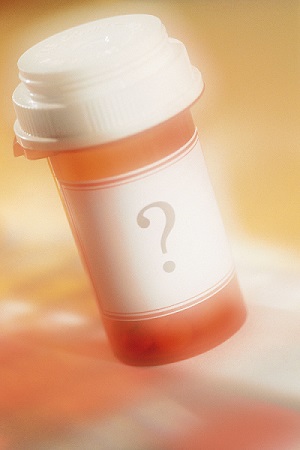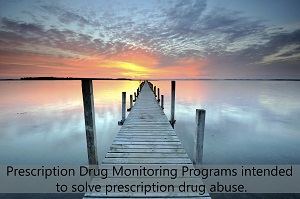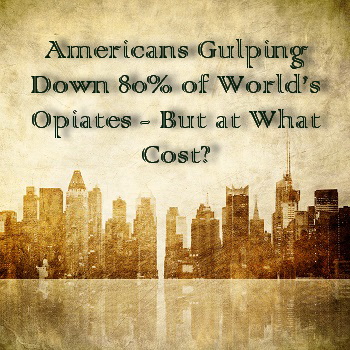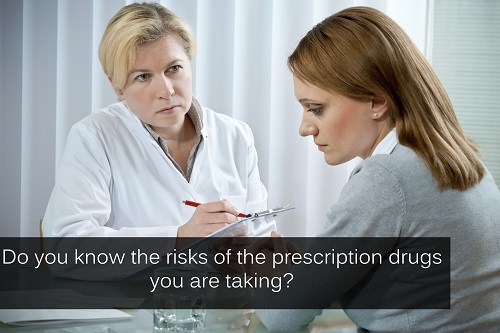Across the U.S., public school health classes and counselors continue to teach about the dangers of drugs like alcohol and cocaine. In the last few years, however, students have begun to learn about what public health officials are identifying as a much larger problem: prescription drugs.
Last year, the pharmaceutical industry released a statement saying that 4.02 billion prescriptions were written in the U.S. in 2011. This comes out to about 13 prescriptions for every American, an all-time record in the U.S. But are all these prescriptions fueling the current prescription drug addiction and overdose rates?
The Statistics
- U.S. doctors wrote 4.02 billion drug prescriptions in 2011.
- According to the CDC, nearly half of the U.S. population has taken at least one prescribed drug during the last month, and more than 20 percent of the U.S. population has taken three or more.
- More than 75 percent of doctor office visits involve prescription drugs.
- More Americans die from prescription overdose than from cocaine and heroin combined.
- Since 2008, more Americans die from prescription overdoses than from car accidents every year.
- In 2011, 16,500 Americans died from prescription painkillers alone.
- Since 2000, the number of prescription overdoses has more than doubled among men, and more than quadrupled among women.
- Americans consume 80 percent of opiate painkillers produced worldwide.
- An estimated 36 million “serious adverse reactions” to prescribed medications in the U.S. every year.
A Growing Epidemic
The dramatic rise of drug prescriptions written every year in the U.S. seems to mirror the alarming rise of prescription drug overdoses, and many experts, including doctors and public health officials, are looking at the issue more seriously. These drugs are very beneficial, but at what cost? Some of the more popular prescribed drugs happen to be some of the most familiar, appearing in magazine, radio and television ads across the country. A recent report released by a London medical journal states that for every $1 spent on researching a particular drug, an additional $19 is spent on promotion and marketing.
The Country’s Most Popular Prescribed Drugs
The numbers of prescriptions written have risen for many drugs across the board in the last decade, and certainly in the last several years. Note that many of the county’s best sellers are not often involved in many overdose deaths (with the exception of hydrocodone). As of 2010, the most popular prescribed medications include:
- Hydrocodone (opiate combined with acetaminophen/Tylenol): pain reliever
- Zocor: drug treating high cholesterol
- Lisinopril: drug treating blood-pressure
- Synthroid: synthetic thyroid hormone
- Norvasc: drug treating blood-pressure
In 2011, the figures changed somewhat, with the anti-depressant Zoloft taking the top slot, followed by the cholesterol medication Lipitor. Sales of drugs treating attention-deficit hyperactivity disorder also jumped, rising 17 percent from 2010.
Most Dangerous Prescribed Drugs
As fatal prescription drug overdoses continue to climb, scientists have been focusing their research on the main drivers behind the epidemic, trying to find which drugs are most likely to cause harm. Opiate painkillers, with their powerful addictive and sedative properties, continue to top the charts and include popular painkillers like OxyContin, Hydrocodone and Vicodin. However, doctors have been aware for some time that taking multiple prescription medications heightens the risk of an overdose.
Medical News Today, for example, reports that many reported fatal overdoses have involved multiple prescription drugs or alcohol. A group of anti-depressants known as benzodiazepines (which includes brand names such as Xanax, Valium and Ativan) seem to be a major contributor, and are involved in about 30 percent of opiate painkiller deaths. This is the first study to point toward a particular group of medications as a dangerous combination with opiates. The danger of alcohol in conjunction with opiates, however, is very well documented.
Of all prescription overdose deaths in the U.S., the ones most commonly involved, alone or in combination with others, are listed below:
- Opioid painkillers: found in about 75 percent of overdoses
- Benzodiazepines: found in about 30 percent of overdoses
- Anti-depressants: found in about 17 percent of overdoses
- Drugs for epilepsy and Parkinson’s: found in about 8 percent of overdoses
The Industry’s Response
The pharmaceutical industry greeted the latest numbers on written prescriptions with enthusiasm. After all, it’s a sign that the industry is growing. When confronted about the alarming rise in prescription drug deaths, manufacturers like Purdue have so far responded with statements about their labeling practices and commitment to working with government officials.
Medical News Today has pointed to unethical online pharmacies as part of the problem. It’s true that recent studies show a link between Internet access and an increase in prescription drug abuse, but doctors are still wary, stating that more studies need to be done. Most likely, online pharmacies (like some corrupt pharmacies elsewhere) comprise just one of many venues that addicts use to get their drug of choice.
Perhaps simply stating that patients and doctors need better communication, or that patients need to read labels more carefully, isn’t enough to combat the problem. After all, Americans consume 80 percent of the world’s supply of opiate medication every year—does this really mean Americans are in more pain than everyone else, or is this a reflection of a broader problem? Whether or not the pharmaceutical industry has any responsibility in the rise of overdose deaths, the problem remains and affects everyone, from preteens to the elderly. Unlike the scary drugs we all learned about in school, these drugs are used and abused by almost every demographic. Complicating the issue even further, these same drugs also help save and improve lives. The question now should be: how do we lower abuse and fatality rates of prescription drugs without restricting access to the patients who really need them? It really is a tough question to answer.
Prescription drug addiction—especially to opiate painkiller medicines like fentanyl—is killing Americans in alarming numbers. In 2010, more than 12 million Americans reported using a prescription painkiller non-medically, and the rates of overdose deaths have more than tripled since 1990. Painkillers are responsible for more deaths than heroin and cocaine combined—so the legitimately prescribed medicines sitting in your cabinet currently pose a bigger public health risk than the illicit narcotics found on street corners.
Since drug addiction is a disease that does significant damage to the health and lives of those affected, many people would like to believe that their insurance provider will look out for them if they spiral into self-destruction. A new report reveals, however, that this is far from the truth. In reality, insurers place numerous restrictions on those seeking medicines that have been shown to help people struggling with opiate addiction.
The Epidemic of Prescription Painkiller Abuse
More and more people are becoming aware of the risks of prescription painkiller abuse, but the death rates still paint a shocking picture of the state of pain management in the U.S. The main issue is that we’re still dependent on opiate medicines (which bear close chemical similarities to illicit drugs such as heroin) and these have a significant risk of addiction and also a notable potential for overdose. Taking too much of a prescription painkiller can produce euphoria. As a result, many people who are prescribed these medication s find themselves regularly exceeding the recommended dosage from their doctor. According to the CDC, sales of prescription painkillers like Vicodin, OxyContin, Percocet and Duragesic have increased by 300 percent since 1999, providing a startling parallel to the rates of overdose death.
s find themselves regularly exceeding the recommended dosage from their doctor. According to the CDC, sales of prescription painkillers like Vicodin, OxyContin, Percocet and Duragesic have increased by 300 percent since 1999, providing a startling parallel to the rates of overdose death.
The key point is that drug addiction is a chronic, relapsing disease just like asthma and diabetes, and users (while they may have chosen to take the substance initially) quickly lose control over their behavior and are unable to stop taking the drugs. Their brains have adjusted to the continuous supply of opiates, so that without them they’re left unbalanced and can experience unpleasant withdrawal symptoms. This means that patients experiencing chronic pain are given medicines that can easily lead them into addiction—even if they have a legitimate reason for taking large doses of the medicine. Just like asthmatics can’t choose to re-open their airways and diabetics can’t increase their insulin levels through sheer willpower, those struggling with addiction can’t just stop craving drugs.
Treatment Is Available
This is why, alongside psychological interventions, drugs such as methadone, buprenorphine and naloxone have been developed to help people struggling with opiate addictions. While methadone and buprenorphine are used to help users gradually decrease their opiate consumption, naloxone is used specifically to counter the effects of an overdose. The key point here is that medicine that could help with the epidemic is available; it isn’t that the medicine doesn’t work or hasn’t been invented.
Insurer Restrictions
It is clear that while opiate painkiller abuse is one of the most significant causes of death in the U.S. today, a mixture of psychological and pharmacological interventions can be used to treat anybody affected. The only problem is that they often aren’t being used and the paper from the Avisa Group—which was commissioned by the American Society of Addiction Medicine—reveals the reasons in undeniable detail.
Firstly, it shows that rural or especially poor areas have higher rates of overdose from prescription medicines, and that Medicaid users are also at an increased risk. The Affordable Care Act, due to come into effect in January, will dramatically increase the numbers of drug-addicted Americans enrolled with Medicaid and other health insurance plans. This sounds like a good thing, but the benefits are limited when you consider the wide range of restrictions placed by providers on the users of medicines like methadone, buprenorphine and naloxone.
The list of restrictions is unfortunately long and inevitably causes a great deal of harm by making it harder to access potentially life-saving medicines. Some medicines aren’t covered by specific insurers or state Medicaid programs, there are limits on the dosages allowed (which don’t always allow for the recommended dosage of the medicine), unrealistic limits on refills and limits on the amount of medicines such as buprenorphine and methadone that you can be prescribed over the course of your lifetime (which are unheard of for other medicines).
Perhaps most shockingly, the insurance companies require authorization and re-authorization processes to be completed, which become more complex the more times a patient has to complete them. These include things like the requirement of counseling before authorization is granted, and this often also involves the insurance companies demanding the counselor’s treatment notes and the patient’s attendance records before making a decision. In many cases, cheaper treatments (which are considerably less likely to be effective) must be tried before authorization is granted, and the entire process can take several days or even weeks. During this time, it’s inevitable that some drug abusers relapse, overdose and die as a result.
Still Fighting Stigma?
The fact that such restrictions don’t exist for other medicines is the worst point revealed by this report, because it essentially shows that addiction is still being stigmatized. How you can morally justify imposing a lifetime restriction on treatment for somebody suffering from a chronic condition is completely beyond comprehension. Nobody would tell a diabetic that they’ve used up their lifetime supply of insulin, yet it’s commonplace for drug users to be told the equivalent. It reflects a deep-seated assumption that drug addiction is somehow a “choice,” and this assumption must be shattered if we’re ever to reduce the public health impact of prescription painkiller addiction.
The prescription drug abuse epidemic is an ongoing battle. Community awareness endeavors encouraged moms and dads to be more aware of the prescription drugs in family cupboards and to secure or remove those drugs. There have been prescription drug turn-in days to help parents responsibly dispose of unused prescriptions. Federal agents have been successful in closing down local pill mills and prosecuting complicit pharmacies here in America. But that does not mean that the supply line for illicit prescription drugs has been shut down. Overseas Internet pharmacies are only too happy to take up the slack.
 A watchdog group called Digital Citizens Alliance engaged the help of a 15-year-old boy to document the ease with which kids can order prescription drugs from abroad. The group videotaped the young boy calling an overseas pharmacy and ordering the prescription painkiller Percocet without a doctor’s prescription. During a second recorded call, this time asking for Hydrocodone, the boy confessed his age and mentioned that he was using his parent’s credit card to pay for the drug. The person at the other end of the call ignored the boy’s age and the lack of doctor prescription and merely asked for more credit card information.
A watchdog group called Digital Citizens Alliance engaged the help of a 15-year-old boy to document the ease with which kids can order prescription drugs from abroad. The group videotaped the young boy calling an overseas pharmacy and ordering the prescription painkiller Percocet without a doctor’s prescription. During a second recorded call, this time asking for Hydrocodone, the boy confessed his age and mentioned that he was using his parent’s credit card to pay for the drug. The person at the other end of the call ignored the boy’s age and the lack of doctor prescription and merely asked for more credit card information.
The group tested the drugs received through phone ordering. In some cases, the drug was exactly what it claimed to be, but in other cases, it was not. Orders for codeine from Pakistan delivered via India proved to be the real deal, but another order for Hydrocodone proved false. This demonstrates several of the problems with online pharmacies. They are difficult to track down and not reliable in terms of drug authenticity.
A second group called LegitScript spent five years investigating online pharmacies for the president. That group says that 97 percent of Internet pharmacies are not on the up and up and only rarely ask for a doctor’s prescription. In most cases, all a buyer is required to do is to fill out an online form. And, if you don’t have mom or dad’s credit card, no problem; Western Union works just as well.
There are more than 40,000 of these kinds of pharmacies. They pop up and disappear quickly. They sell to anyone who can show them the money. These overseas drug vendors have created a never-ending battle for law enforcement who can’t possibly track down every one of them. Prosecution is also difficult since there is another government involved.
Teens may not be raiding the family medicine chest, but they have found another way to get illicit prescription drugs. Parents need to educate teens about another reality however. It is illegal to sell drugs without a prescription and it is illegal to purchase them without a prescription too.
Pain medications are often prescribed for chronic pain related to other medical conditions, such as cancer or an injury that results in ongoing pain. In all cases, the prescription of a pain medication to relieve pain must be weighed against the potential negative consequences of using such a medication, including not only side effects but also the risk of addiction.
In addition, the pain is best managed when there are follow-ups to the prescription that include assessments of pain levels and examination of co morbid conditions. In a recent study, researchers led by Leslie R.M. Hausmann, PhD of the Veterans Affairs Pittsburgh Healthcare System and Assistant Professor of Medicine at the University of Pittsburgh discovered that there are significant disparities between races in how pain management is executed.
The researchers found that the differences are present in the monitoring of opiods and in the follow-up routines. The recommended guidelines include assessing patients for the effectiveness of the medication, as well as screening them for evidence of drug abuse. The study’s findings appear in a recent issue of the journal PAIN.
The study’s focus included several measurements of pain management defectiveness, including the physicians’ implementation of an opioid agreement, measurement of pain levels at follow-up exams, inclusion of urine screenings for drugs and referrals for pain clinics and substance abuse treatment.
The retrospective design incorporated health records representing 1,646 white patients and 253 black patients. The data was taken from electronic health records that met certain criteria. The patients were all prescribed opioids for pain not related to cancer at the Veterans Affairs Pittsburgh Healthcare System pharmacy and used the medication for at least 90 days. The records were all from October 2007 to September 2009.
The researchers also assessed data about prescription painkiller follow-up and monitoring practices for the 12 months following the prescription period, to form a complete profile of the pain treatment.
The patients were 94 percent male and 22 percent were over the age of 65. Forty-five percent were married or living with a partner, and were most commonly treated for joint or back pain. Approximately one half of the patients had a co morbid mental or physical health condition, and one-third of the patients had a past of substance abuse.
 When comparing the patients, the black patients were younger, less liable to have pain in their back, and had more physical co morbidity and higher pain levels recorded. The black and white patients were similar in history of drug abuse.
When comparing the patients, the black patients were younger, less liable to have pain in their back, and had more physical co morbidity and higher pain levels recorded. The black and white patients were similar in history of drug abuse.
However, major racial differences were discovered as pertained to monitoring of pain prescription use and the effectiveness of the medication. Black patients seemed less likely to be monitored for pain levels during medical exams and among those patients given a urinalysis, black patients were tested more often, and particularly if they were prescribed a higher dose of medication.
Black patients also were less liable to receive a referral to a specialist for pain treatment and were more likely referred to a substance abuse treatment facility after taking prescription opioids.
The findings indicate that when black patients are prescribed opioid medications for pain treatment, they may not be receiving similar follow-up and monitoring practices that may maximize the benefit of their pain management treatment.
Read more about Dispelling Racial and Socioeconomic Myths About Drug Users
There is little argument that America is in the midst of an opioid epidemic, but health officials will argue about how to solve the problem.
Scientific articles published recently in the same journal represent ideas that conflict. The Annals of Internal Medicine, a publication established in 1927 by the American College of Physicians, published two articles on the subject of restriction prescription in hospital emergency departments. The issue revolves around the current guidelines for how much pain medication should be kept in the pharmaceutical areas of emergency departments. One side of the debate says that the current regulation of a three-day supply is not enough for the average emergency department. The other side of the debate says the limited supply will force doctors to make wiser choices in who gets what pain medicine.
Prescription Drug Abuse
New York City made headlines earlier this year when city officials announced that the most powerful and common painkillers on the market today would be restricted in the city’s 11 public hospitals. The move was in response to the abuse of painkillers that has gripped the city. These painkillers include Vicodin, OxyContin and Percocet. Methadone and Fentanyl are no longer distributed in the public hospitals. Those in favor of the restrictions note that there has been a rapid increase in opioid analgesic consequences and that restricting the medications in question will help doctors provide safer care for their patients who are experiencing issues with pain.
Many Americans now have an expectation that a visit to the emergency room will result in acquiring pain medication. Some emergency department personnel agree that something has to be done about that perception, which is bolstered by doctors that could perhaps be less willing to doll out the drugs to patients in pain. Non-narcotic medications are now beginning to find their way into emergency departments, as are pain meds that are engineered to be less addictive.
For parents struggling with addictions, trying to manage normal day-to-day family issues such as sibling rivalry and school stresses and pressures is compounded by a special complication, something specific to families dealing with addictions (or families in which one or both parents are unable to function in their parenting role on a regular basis). As hard as most parents try to protect their children from the negative impact of their drinking or drug use, the impact is experienced by all family members. One way this plays out is through rigid and dysfunctional family roles.
(or families in which one or both parents are unable to function in their parenting role on a regular basis). As hard as most parents try to protect their children from the negative impact of their drinking or drug use, the impact is experienced by all family members. One way this plays out is through rigid and dysfunctional family roles.
Before we continue, let me say something about family dysfunction. As a treatment provider for people with addictions and their families for many years, I saw how devastating addictions can be to lives young and old. What’s important to remember here is that despite having an addiction that often leads to very negative behaviors—including violence, abuse, neglect—and despite being labeled “dysfunctional” (we’ll get to that in a moment), these are families that also are bonded by love and loyalty. These are parents who love their children and want the best for them and children who love and defend their parents despite having suffered due to their behaviors.
Taking apart the word “dysfunctional,” the prefix ‘dys’ refers to pain. Dyspepsia is a stomachache; dysmenorrhea is the technical term for painful periods. Dysfunction in the family context means that a family is functioning in pain. Meals do get made, children attend school, play sports, parents work, but the context in which all this happens is emotionally painful. Sometimes my clients would get defensive about the term “dysfunctional,” telling me that it felt like blame to say their family “ didn’t function.” So I make a point of agreeing: there is functioning and often children from families impacted by addiction function very well in some ways; but it would also be unfair and inaccurate to fail to acknowledge the pain that occurs too.
Family Roles
In all families, affected by addiction or not, family members take on roles. Sometimes Mom takes on the role of the discipliner, sometimes Mom is the “banker” for the family. Dad might have been the “sports guy” or the social planner. Imagine a particular behavior—for example, climbing a tree or catching a frog—and most people would then be able to predict which family member would be most likely to engage in that behavior and which would be least likely. The kid who was “outdoorsy” or a girl who fit the “tomboy” role would be first in line. In healthy families, the roles arise from internal personality characteristics and are flexible—as a child grows, develops, and changes, so do the roles.
In families affected by addiction, certain specific roles seem to evolve. These roles are more rigid and predictable, and have been described by a few well-known writers in the field of addiction and family roles. The names change from writer to writer, but the basic roles are similar.
The Second in Command:
In families where addiction is impacting the dynamics, the alcoholics or addicts often have someone on “their side,” someone who takes on the task of keeping the family functioning by keeping the person who is using as functional as possible. This person calls in sick for the drinker, or makes excuses at “Meet the Teachers Night.” They find themselves lying to the kids, the neighbors, their friends and ultimately themselves. Family systems therapists refer to this role as the Chief Enabler, or Codependent. Sometimes in the literature on addiction and alcoholism, people refer to the codependent person as “addicted to the addict.” These people seem to need the relationship more than they seem to need their own health. Let’s take a closer look at this role.
This role is a tough one: the job includes handling all the chores and responsibilities the drinker is not doing. The Chief Enabler just takes over, managing, organizing, acting as the Executive Director, administrative assistant, communications director, and database manager, over-functioning in all these roles (the school principal called? Your boss called? A run-in with police? “I’ll handle it” is the typical Chief Enabler response). He or she is the glue that holds the family together, usually working long hours; often at a job earning money and then at home taking care of all the details that can get left unmanaged when an addict uses.
The purpose of this role is to prevent the family (including the drinker) from experiencing the negative consequences of addiction. Of course this is impossible, which makes this person feel hopeless and frustrated, but also very important, since there are small successes and triumphs (such as a little league game attended by the addict or alcoholic, or open house at the school) along the way. The Chief Enabler feels “stuck” and often very angry about their stuckness because they know how important they are to the “success” of the family (in fact, it often feels like “if I don’t do it, it won’t get done”).
People in this role often receive much praise and support from the community. People outside the family often admire the Chief Enabler, which is one of the few positives about being in this role—often others outside the family recognize how critical the Chief Enablers actions are to the health or even survival of the family—so you hear comments like, “Mary really holds that family together.” The other side of this coin is that they also feel alone and furious at being stuck with being the responsible one who has to take care of everything. The fact that these people often do an excellent job, partly because they’ve had so much practice, is their blessing and their curse and is the catch 22 they experience as “stuckness.”
Read Part 2: Dysfunctional Family Roles: The Family Hero Tries to Hide the Obvious Here.
Prescription Drug Monitoring Programs (PDMPs) have been implemented in almost every state and they offer new hope in the fight against the prescription drug abuse epidemic. However, with underfunding and some objections from doctors being raised, the effectiveness of the virtually nationwide approach is yet to be established. It’s touted as a solution to the problem of “doctor shopping” and as a useful approach in curbing prescription drug abuse on the whole, but addiction is a complex issue to tackle. Finding out about the programs, the problems they intend to solve, and the potential issues with the approach helps you understand what states across the country are doing to combat the epidemic.

Prescription Drug Abuse Statistics
According the National Institute on Drug Abuse, 7 million Americans used prescription drugs non-medically in 2010. The most common type of drugs abused is opioid analgesics like Vicodin, which are basically narcotic painkillers related to heroin. Other substances, such as amphetamine-like stimulants and tranquilizers, which treat anxiety, are also widely abused across the country. A report in the Los Angeles Times reveals that deaths from drug overdoses have increased for the eleventh consecutive year. The problem is believed to stem from the relative availability of prescription medicines and their reputation as “safe,” combined with the addictive nature of the substances.
Doctor Shopping
Doctor shopping is the practice of going to numerous doctors for prescriptions of narcotic medications to get more pills. It’s already outlawed according to general fraud, subterfuge, and deceit laws across virtually all states, but actually identifying it is extremely challenging without a centralized database. As a doctor, you have no way of knowing if a patient coming into your practice has already gotten another prescription from somebody else, unless each prescription is registered. The relative ease of doctor shopping means that some people are able to obtain vast quantities of narcotic medicines and then sell them for others to abuse.
PDMPs
This is why prescription monitoring programs were set up. They focus on potentially addictive drugs such as OxyContin, Adderall, Valium and Vicodin, and can be thought of as central databases for doctors to record their prescriptions. Before issuing a prescription, doctors check the database to determine whether the individual has been prescribed the drugs before or should already have a sufficient supply. The benefits of this are immediately obvious: not only will it prevent doctor shopping; it will also help to identify individuals who may be addicted to prescription drugs. Federal funding is available, which has driven the overwhelming majority of states to set up their own programs.
The programs have been widely adopted across the US, with states such as Wisconsin and Florida recently passing bills and implementing PDMPs. Now, only Missouri lacks a program, after the bill was defeated in 2012. Despite problems with the functionality of the databases and some funding issues, doctors in places such as San Diego have eagerly registered for the programs.
Problems With the Approach
Despite the positive outlook for prescription monitoring programs across the country, there are some potential issues with the strategy. The main one is the privacy, which was cited as a reason the idea isn’t being well received in Missouri. Essentially, confidential medical information is being placed onto a widely accessible database. Although the databases can only be accessed by medical professionals and pharmacists, there is an obvious concern about patient privacy.
Whether this fairly trivial intrusion into personal privacy is warranted by the scale of the prescription drug problem in the U.S. is open to debate, but ultimately doctors and pharmacists have the same information for their regular patients anyway.
Doctors have raised some more practical and defensible issues, though. One such criticism is that the databases are extremely time-consuming. Consulting a database before prescriptions are given and then recording any prescriptions takes time (particularly if there are server issues or problems with the functionality of the database), and this could impact the number of patients they could see.
Conclusion
Prescription monitoring programs will not prevent people from abusing prescription medicines. Patients will still often receive too many pills for their pain and later give in to the temptation of recreational use or give them to friends to do the same. However, the databases will do wonders to reduce the amount of prescription drugs available for people to abuse. Doctor shopping isn’t the whole problem, but it is a significant contributor, and the monitoring programs are exceptionally well-equipped to curb the practice. In this way, it’s a vital step toward reducing the shocking numbers of deaths each year from prescription drug overdoses, and something that should be welcomed with open arms.
29 Apr 2013
Prescription Opioid Abuse and Risks for Suicide
Prescription opioids are a group of medications commonly used to treat forms of pain that don’t respond to other types of medication-based treatment. Because of certain changes they make in normal brain function, these medications present a very real risk for both abusive patterns of use and drug addiction; in turn, both prescription opioid abuse and prescription opioid addiction create increased risks for suicidal thinking and active suicide attempts. According to research findings reported in 2012, elevated suicide-related risks commonly remain in long-term opioid abusers and addicts even when they discontinue drug use.
Prescription Opioid Basics
All prescription opioids are based on substances that occur naturally in Papaver somniferum, a plant species popularly known as the opium poppy. Two of these medications, morphine and codeine, come more or less directly from ingredients contained in the sap of P. somniferum. Two other common prescription opioids, hydrocodone (Vicodin, Lortab), and oxycodone (OxyContin), are created in pharmaceutical laboratories through chemical manipulation of naturally occurring opioid substances. Three additional common opioid medications—fentanyl (Fentora, Actiq), synthetic codeine, and meperidine (Demerol)—are manmade substances designed to chemically resemble the natural opioids.
Each prescription opioid medication has its specific typical role in medical treatment. For instance, doctors typically use codeine to relieve relatively moderate pain or ease the effects of medically serious coughing or diarrhea. Morphine is commonly used to relieve severe pain in surgical settings, while doctors use hydrocodone and oxycodone for a range of conditions involving moderate to severe pain. Regardless of their particular common use, all prescription opioids (and illegal opioid drugs) achieve their pain-relieving effects in a similar way by entering the body and attaching themselves to sites in the nervous system called opioid receptors. When activated by the presence of opioids, these receptors help override pain signals traveling through the nervous system to the brain.
When opioids attach themselves to opioid receptors located in the brain, they produce an additional effect by triggering a dramatic increase in the levels of a brain chemical called dopamine; in turn, this dopamine increase produces intense pleasure. In prescription users, opioid abuse and addiction typically become issues when a given individual seeks out this pleasure as a recreational activity and increases his or her level of intake above the level sanctioned by a doctor. This situation differs fundamentally from the situation of prescription users who follow their doctors’ orders and come to depend upon opioids’ legitimate pain-relieving effects.
Suicide-Related Risks
Unfortunately, suicidal thinking and active suicide attempts are found among prescription opioid abusers and addicts with some regularity. In 2012, researchers from the American Psychiatric Institute for Research and Education examined suicide-related factors in almost 38,000 participants in a study called the 2009 National Survey on Drug Use and Health, which was conducted by the U.S. government’s Substance Abuse and Mental Health Services Administration.
These researchers found that about 15 percent of the survey respondents had misused a prescription opioid medication at least once. They also found that roughly 11 percent of all people who had misused prescription opioids for at least two years had considered suicide in the year before the survey. In addition, roughly 9 percent of all people who had misused these medications for less than a year had considered suicide during the same period of time. By comparison, only 3 percent of people who didn’t use prescription opioids considered suicide in the year before the survey.
The authors of the American Psychiatric Institute for Research and Education’s study noted several factors that help determine the risks for suicidal thinking in people who misuse prescription opioids. The most prominent factor is a level of misuse that qualifies for standard definitions of drug abuse or drug addiction; fully 23 percent of survey participants with suicidal thoughts self-reported this degree of medication misuse. Another important factor is the presence of symptoms consistent with a diagnosis of the psychiatric disorder known as major depression. In addition, the authors of the study concluded that the risks for suicidal thinking don’t end with the discontinuation of opioid use, and former long-term users continued to exhibit suicidal thought patterns significantly more frequently than people who have never used prescription opioids.
About 18 percent of all current prescription opioid users/abusers who considered suicide actually went on to make active suicide attempts, while 7 percent of former users/abusers with suicidal thoughts attempted suicide. By comparison, 11 percent of survey participants with suicidal thoughts who never used a prescription opioid attempted to kill themselves.




